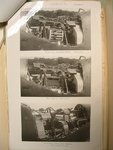- Thread starter
- #21
CharlesBronson
Senior Master Sergeant
I admit to not understanding the comment 'The ammunition should be manufactured to fit the chamber of the gun it which it will be fired and not to fit the British or American 20mm. What were they supposed to make.
The estimate of a 15-25 year development period for an optimum aircraft weapon is shall we say, pessimistic, in view of the development period of the Aden and Defta 30mm guns
Agreed with you. 15 or 25 is ridiculos excessive, the Colt MK-12, gun wich replaced the Hispano An-M3 in Navy usage was developed in just 6 years, between 1946 to 1952.
The ammunition thing is a bit laberynthic, specially when you think that the cases teorically were the same for both US and RAF guns, must be related with the cartrigde overall lenght.











































